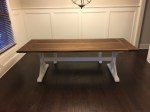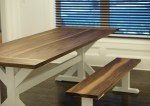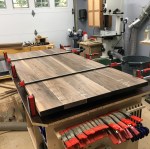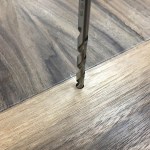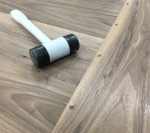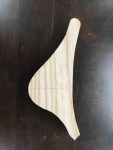Finishing the Farmhouse Table
I love working on big projects like the farmhouse table. However, my shop is small and the table is large. It takes up a lot of space, and I am unable to work on anything else. So, I was anxious to finish the farmhouse table and deliver it to the customer.
The customer wanted a white base. So, the base received three coats of white paint. Due to all of the nooks and crannies, I found that a paint brush was the easiest way to apply the paint. Unfortunately, this was quite time consuming, but it got the job done.
A dining room table not only needs to be attractive. It also needs a durable finish. Consequently, I applied three coats of poly-urethane. I used a simple wipe-on poly, that could not have been easier to apply. Each coat only took a matter of minutes to apply. If only I didn’t have to wait 2-3 hours between coats.
With the finish applied, I delivered the table and bench to the customer. I kept the table top and table base separate. This allowed us to move it through the front door quite easily. Once in the customer’s dining room, I assembled the table and took a few pictures. I think it turned out great and the customer was very happy.
I really enjoyed this project, but I’m glad to have my shop back.

